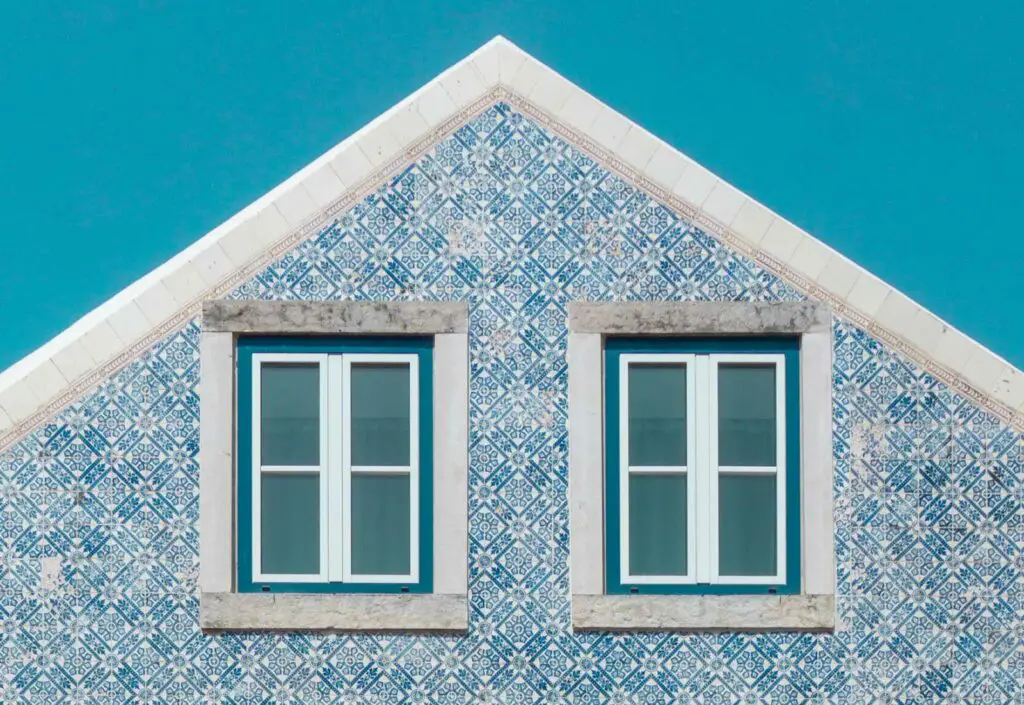Do you know what a gable roof is? There’s no double you’ve seen them before without realizing it. Gable roofs are one of the most common types of roofs found in North America and around the world, and they have a unique look that sets them apart from other roof styles.
But what specifically is a gable roof?
A gable roof is a type of residential roof characterized by two sloping sides that meet at the ridge, forming a triangular shape known as a gable. This roof style is common in many parts of the world and offers several advantages such as protection from weather elements, better ventilation, and additional living space.
Understanding what a gable roof is and how it works can be helpful whether you’re designing a new home or planning to renovate an old one. In this article, we’ll explore the basic features of a gable roof, discuss ways to customize it for your specific needs, and help you decide if this type of roof is right for your upcoming project.
By the way – before we get too far along here, if you want to connect with other homeowners and builders and get more great ideas for your home to make your space the best join my free private Facebook group, Remodel Reality here.
The Gable Roof: An Overview
If you’re looking for a roof design that efficiently drains water and provides ample ventilation, consider the classic gable roof. This style is defined by its two sloping sides that meet at a central ridge or peak, creating a symmetrical look with angles that typically form right angles between the roofline and the building’s walls. You can use various materials to build gable roofs, such as wood, metal, and asphalt shingles.
This roofing design has been in use for centuries, dating back to ancient civilizations. The Greeks and Romans used gable roofs extensively for their temples and public buildings. The Medieval Europeans also employed this design for their churches, castles, and other important structures. Over time, variations of the gable roof have emerged to cater to different needs and aesthetics. Examples include the Dutch gable roof and gable roofs with dormers. Despite these modifications, they still follow the fundamental principles of the traditional gable roof design.
Gable roofs not only provide good drainage for precipitation but also maximize air circulation within structures, making them an ideal choice for many buildings in different sectors such as residential homes or commercial shops. They can be customized to fit your preferences while maintaining their useful features.
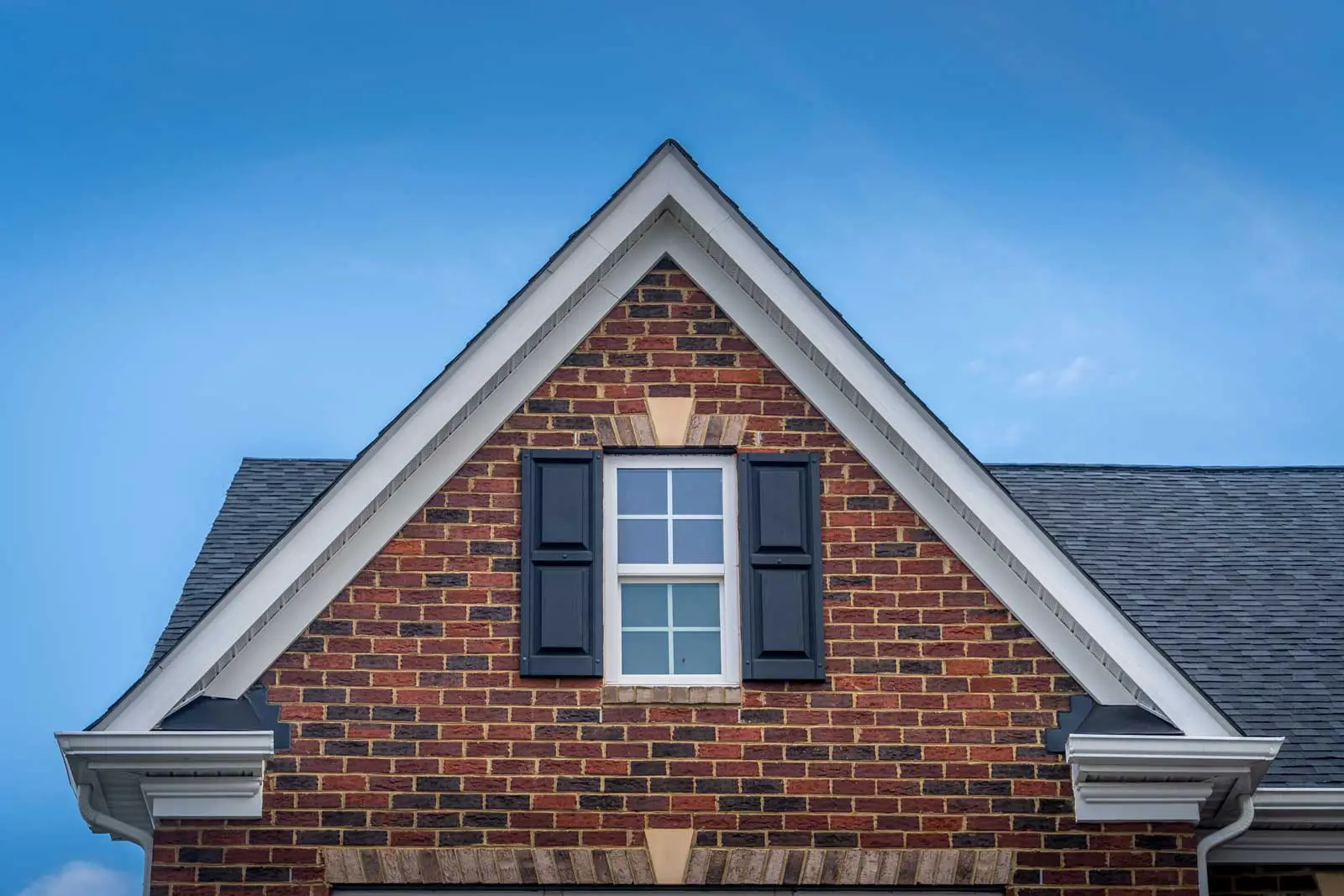 What Is A Gable Roof?
What Is A Gable Roof?
This type of roof has two sloping sides that meet at the top to form a triangular shape, making it one of the most common roof styles used in homes.
One of the greatest advantages of gable roofs is their ease of construction and installation.
Their steep pitch allows rain, snow, and other debris to slide off easily, providing better protection against leaks. Moreover, because they are designed with vents or windows on the ends of the gable walls, this increases attic ventilation which is vital for maintaining healthy indoor air quality.
If you live in an area prone to strong winds such as coastal areas or tornado-prone regions), you’ll be glad that gable roofs offer greater resistance against wind uplift.
There are several types of gable roof designs available for homeowners to choose from. One popular style is the side-gabled roof, which is commonly used for traditional or colonial-style homes. Front-gabled roofs are another option; facing towards the front of the house these are often used in Cape Cod-style homes.
For those in search of something unique yet functional there’s also cross-gabled roofs. These have two or more gable roofs intersecting at different angles providing ample usable space inside in addition to being aesthetically pleasing from outside.
Another interesting variation on a typical gable roof is found in Dutch Gables (also known as hip-to-gable roofs). These add additional space under eaves while still allowing plenty of natural light indoors by incorporating dormers.Generally considered a more refined version than other styles but can be more expensive due to added complexity during building process requiring expert know-how & equipment.
Last but not least Jerkinhead Roofs combine clipped corners typical for Hip Roofs with straight edges characteristic for Gables resulting into recognizable hybrid design very popular during late 19th and early 20th century especially in America.
| Type of Gable Roof | Description | Pros | Cons |
|---|---|---|---|
| Side-Gabled Roof | This design features two sloping sides that meet at the ridge line and run parallel to the walls of the house. | Provides a classic and traditional look. Allows for more space in the attic. Easier to build and maintain. | May not be ideal for areas with high winds. |
| Front-Gabled Roof | The two sloping sides of this design meet at the front of the house, creating a distinctive look. | Adds charm and character to a home’s facade. Offers better protection against wind and rain. | May not be suitable for homes with a narrow frontage. |
| Cross-Gabled Roof | This design features two or more gable roofs intersecting at different angles, creating a more complex look. | Offers versatility in design and adds visual interest. Allows for more varied room configurations. | More complex to build and may require additional structural support. |
| Dutch Gable Roof | Combines the functionality of a gable roof with the style of a hip roof. This design features a gable roof on top of a hip roof, creating an L-shaped structure. | Provides more space in the attic. Enhances a home’s curb appeal. | More expensive to build than a standard gable roof. |
| Jerkinhead Roof | Also known as a clipped gable roof, this design features a gable roof with clipped corners, creating a unique look similar to a hip roof. | Offers a unique and distinctive look. Provides better wind resistance than a standard gable roof. | May not be as structurally sound as other types of roofs. Can be more expensive to build. |
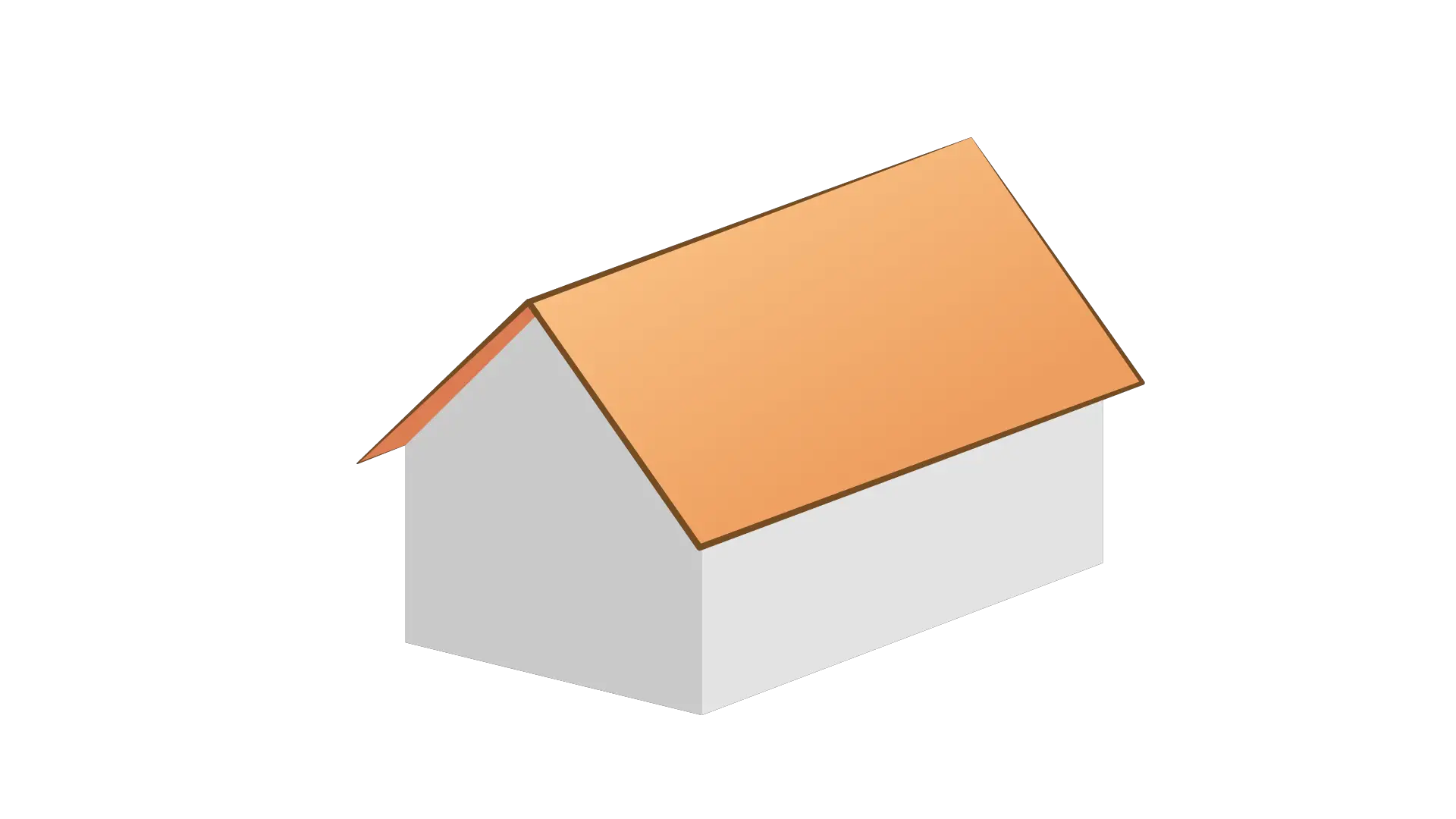 The Different Parts That Make Up A Gable Roof
The Different Parts That Make Up A Gable Roof
A gable roof is made up of several parts that work together to provide a sturdy and functional structure. Here are some of the key parts of a gable roof:
| Parts of a Gable Roof | Description |
|---|---|
| Ridge beam | The highest horizontal member of the roof that runs along the top of the roof, connecting the two opposite sloping sides. It serves as the central support for the entire roof structure. |
| Rafter | A sloping structural member that supports the sheathing and roofing material and runs from the ridge beam to the eaves. The rafters provide the roof’s basic framework and help distribute the weight of the roof evenly across the walls. |
| Truss | A prefabricated structural member made up of interconnected triangles that provides support and stability to the roof. The truss transfers the weight of the roof to the walls below, eliminating the need for load-bearing interior walls. |
| Purlin | A horizontal structural member that runs perpendicular to the rafters and provides support for the roof decking and roof covering. It helps to distribute the weight of the roof evenly and adds extra strength to the roof structure. |
| Fascia | A vertical or horizontal board that covers the exposed edges of the roof and provides a finished look. It is typically made of wood, aluminum, or vinyl and helps to protect the roof from water damage. |
| Soffit | The underside of the eaves that extends beyond the walls of the house. It is typically made of wood or vinyl and helps to provide ventilation to the roof and attic space. It also helps to protect the rafters and roof decking from moisture and insects. |
The Purpose of a Gable Roof
If you have a gable roof, it serves several essential functions that contribute to the protection and comfort of your house. One of the primary functions of a gable roof is protecting your home from the elements like rain, wind, and snow. The steep slope design allows for easy runoff, reducing the likelihood of water damage to the structure of your home. You can also benefit from an overhang at the end which provides additional protection from sun and rain, keeping your walls dry.
Another purpose of having a gable roof is that it generates extra living space in the form of an attic area. With its steep slope style, you can create a spacious triangular attic which can be used as either storage or living area. Adding windows or skylights and filling up the space with natural light will make it bright and inviting as a cozy living space. Dormers that are vertical windows projecting from roofs can also be added to provide more lighting for natural ventilation into this beautiful attic space.
The gable roof’s design naturally creates better ventilation which enables hot air to escape from your living space reducing heat buildup in summer months through attics making ambiance more comfortable overall. Overhangs placed at both ends help keep homes cool by providing shade and allowing airflow inside further controlling heat in the summer season.
Proper ventilation becomes critically important while maintaining good health hygiene standards within houses as adequate airflow prevents condensation accumulation along with mold growth for health safety reasons. By having a proper gable roof with vents that enable continuous airflow, you are able to achieve better ventilation throughout your house improving overall comfortability while ensuring consistent hygienic breathing conditions for everyone!
Why Is It Called A Gable Roof?
Have you ever wondered why it’s called a gable roof? The name comes from the Old English word “geble,” which refers to the triangular-shaped portion of a wall located between the two sloping sides of the roof. In architecture, gables refer to the triangular portion of a wall beneath the roofline and above the eaves. Gable roofs get their name from the triangular shape that they create at each end.
Gable roofs have been used for centuries and can be found in various architectural styles, such as Gothic, Tudor, and Georgian. They were popular in medieval Europe and were frequently employed in churches and cathedrals. The steeply pitched gable roofs of these buildings featured decorative elements such as spires, finials, and gargoyles.
In America, gable roofs became prevalent during colonial times and were frequently used in home and public building construction. The straightforward design made them easy to construct while providing adequate drainage for rainwater and snow due to their steep pitch. Even today, gable roofs remain a popular choice for residential and commercial buildings because they’re versatile while maintaining their simple yet elegant design.
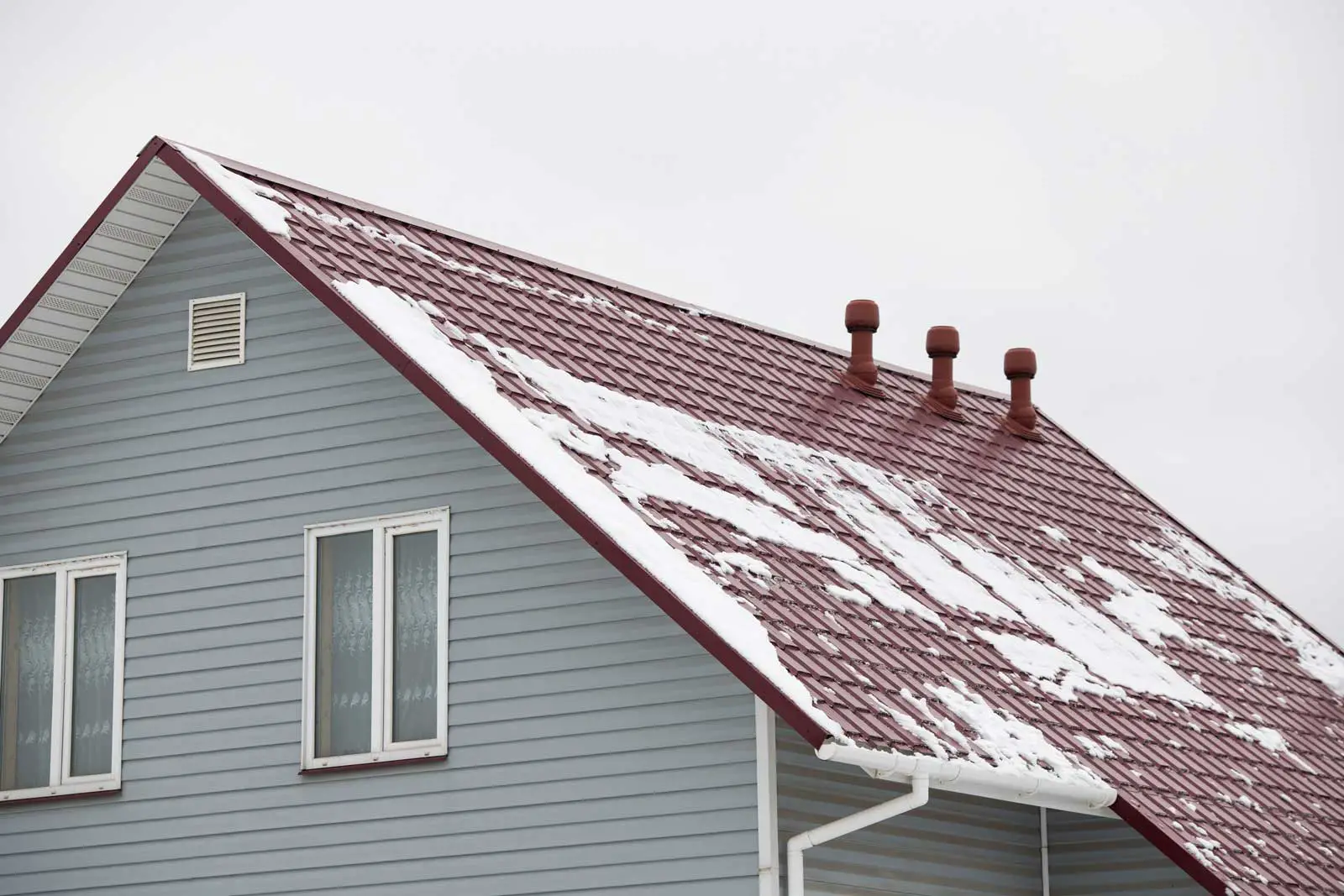 What Does A Gable Roof Look Like?
What Does A Gable Roof Look Like?
You’ll find that gable roofs are characterized by their triangular shape. This shape is created by two sloping sides that meet at the top of the roof to form a ridge. The highest point of the roof runs horizontally along its length and is called the ridge. The walls of this triangular shape are formed by the gable ends on both sides. Slopes of these roofs can vary depending on the desired style, design, and weather conditions.
Gable roofs come in different styles that have unique features and characteristics. One popular style is a cross gable roof which is created by joining two or more gable roofs together at right angles to create an L-shaped or T-shaped structure. Cross gable roofs are often used for houses with wings, garages, or porches.
Another popular style is the front gable roof where the gable is located at the front of the house creating a distinctive facade. Front gable roofs are common in traditional architectural styles such as Colonial-style homes.
Side gable roofs have their slope on one side of the house running parallel to both front and back walls. This type of roof is commonly found in contemporary architectural styles like ranch-style homes.
Dutch gable roof design combines elements of both hip roof and a standard gabled system featuring a hip section flanked by a characteristic winged portion at either end of it’s ridge line forming smaller but distinctive “gable-lets.”
Finally, jerkinhead roof designs offer an alternative type; partially clipped off above increasing the commercial building space utilizing wide variety framing options with steep pitches for second story additions on top whereas retaining some stylistic flair from similar designs like Craftsman-style homes returning to favor lately thanks well-executed home rehab fever!
Advantages Of A Gable Roof
If you’re looking for a roofing structure that will offer durability and stability against various weather elements, a gable roof may be the right choice for you. One of the advantages of having a gable roof is that it is better equipped to withstand strong winds. The steep pitch of the roof allows wind to flow easily over it without causing any damage to the overall structure. Moreover, its triangular shape provides stability against the force of the wind which can help prevent damage.
Another advantage of having a gable roof is its capacity to resist heavy snowfall in regions where such weather conditions are common. Since its steep pitch permits snow to easily slide off the surface, there’s no risk of accumulation that could potentially damage your roof.
A third benefit of a gable roof is that it provides ample space for an attic, making it ideal for those who wish to use their attic as storage or additional living space. A higher ceiling height can be achieved by installing dormers or skylights which also adds more light.
A gable roof offers several benefits including improved resistance against wind and snow while providing ample space for storage or even extra living quarters.
Disadvantages Of A Gable Roof
If you’re considering a gable roof for your building, it’s important to be aware of some of its disadvantages. While there are many advantages to this type of roof, here are some things to keep in mind:
First, a gable roof requires more roofing materials than some other types of roofs due to its shape and size. This means that choosing a gable roof could result in higher costs for both the materials and installation. This is something to keep in mind when deciding on a roofing system for your building.
Second, installing a gable roof can be more expensive compared to other types of roofs. Gable roofs are more complex in design and require skilled labor to install properly. This means that additional time and labor will be required, resulting in higher installation costs.
Lastly, it’s important to note that gable roofs can be vulnerable to wind damage in certain conditions. If the slope of the roof is too steep or the roof overhang is too large, the wind can create an uplift force that can cause the roof to detach from the walls. This problem is particularly severe in areas with high wind speeds or frequent storms. Additionally, if a gable roof has large open ends or gaps designed into its structure it may act as an entry point for wind – this could potentially lift off entire portions of roofs leading to significant damages.
Despite these disadvantages, many people still choose gable roofs because they offer so many benefits. Always remember it is essential speaking directly with roofing professionals about any concerns and finding out what best suits your needs!
| Advantages of a Gable Roof | Disadvantages of a Gable Roof |
|---|---|
| Provides better resistance to wind | Requires more roofing materials |
| Provides better resistance to snow | Higher installation cost |
| Allows for more attic space | Vulnerable to wind damage in certain conditions |
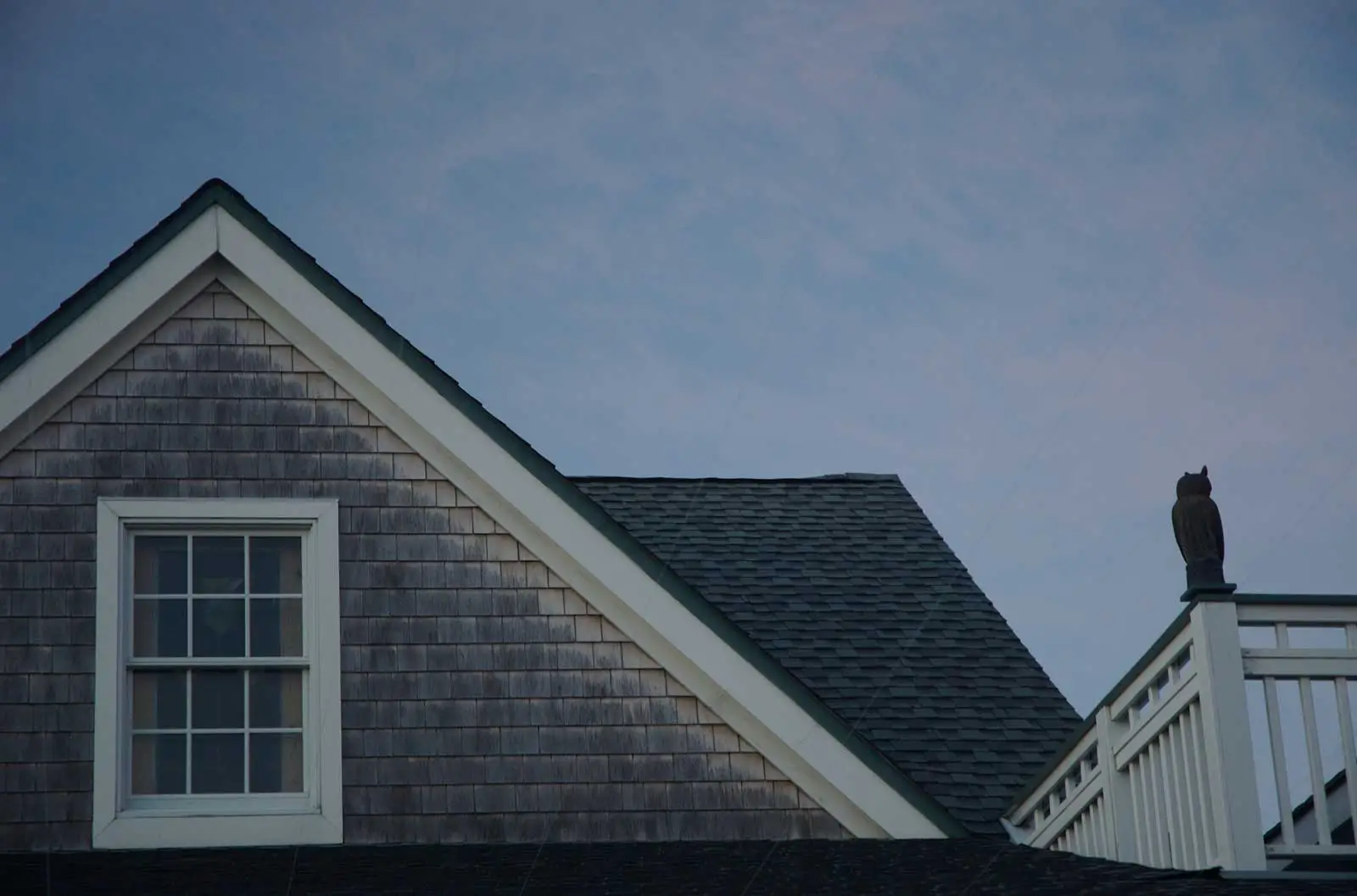
Gable Roof vs. Hip Roof
When deciding between a gable roof and a hip roof for your construction project, it is important to understand the differences in their design and function. A gable roof is defined by its triangular shape, while a hip roof has slopes on all four sides that come together at the top to form a ridge.
One advantage of a gable roof is its simpler design with just two slopes forming a triangle. This makes installation easier and typically results in lower costs. However, it may not offer as much stability in high wind conditions compared to a hip roof.
In contrast, a hip roof requires more materials and has a more complex design due to the additional slopes. This can result in higher installation costs but offers greater stability in high wind conditions, making it popular for areas prone to hurricanes or tornadoes.
Another difference between these types of roofs is the amount of attic space provided. Gable roofs offer greater vertical space, allowing for more headroom and storage space but make utilizing it as living space difficult. In contrast, hip roofs have less vertical space but can still provide ample storage without sacrificing livability.
| Features | Gable Roof | Hip Roof |
|---|---|---|
| Definition | A roof with two sloping sides that form a gable in the middle | A roof where all sides slope downwards towards the walls |
| Design | Simple, symmetrical design with a triangular shape | More complex design with a pyramid-like shape |
| Roof pitch | Steep roof pitch to allow water and snow to slide off | Low roof pitch, making it less prone to wind damage |
| Construction | Simple to construct with less materials and labor costs | More complex to construct with more materials and labor costs |
| Ventilation | Adequate ventilation due to its design and roof pitch | Requires additional ventilation due to low roof pitch |
| Attic space | Provides ample attic space for storage and living | Limited attic space due to its design |
| Durability | Prone to wind damage due to its design and roof pitch | More durable due to low roof pitch and overall design |
| Energy efficiency | Less energy-efficient due to its design and roof pitch | More energy-efficient due to low roof pitch and overall design |
| Popular use | Commonly used in residential and commercial buildings | Popular in regions with high precipitation and strong winds |
| Aesthetics | Simple, classic appearance suitable for many architectural styles | Elegant, sophisticated appearance that complements many architectural styles |
It’s important to note that the above table is not an exhaustive list of all features or differences between gable and hip roofs, but rather a comprehensive comparison of some of their key features.
Different Types Of Gable Roofs
So we introduced the different types of gable roofs previously. I wanted to get into a little more detailed explanation of five specific types of gable roof.
A. Side-gabled roof
The first type is the side-gabled roof which is very common, and as the name suggests, features two sloping sides that meet at the ridge line. This design is simple and cost-effective to construct, and it provides excellent resistance to wind. It is ideal for areas with high wind loads.
B. Front-gabled roof
The second type of gable roof is the front-gabled roof which has a gable end facing the front of the house. This variation of the side-gabled roof is popular in colonial-style homes due to its steep pitch and symmetrical appearance. It provides excellent resistance to wind and water, making it a great choice for areas with harsh weather conditions.
C. Cross-gabled roof
The cross-gabled roof is another variation of the gable roof featuring two or more gables of different sizes and orientations. This design can be found on larger homes where it creates separate wings or sections of the house while providing excellent ventilation and natural light, making it ideal for multi-story homes.
D. Dutch gable roof
For those looking for a hybrid design that blends features from both hip and gable roofs, consider a Dutch gable roof which has a gable on top of a hip roof, creating an elegant appearance characterized by its steep pitch and flared eaves. This design is popular in traditional and colonial-style homes.
E. Jerkinhead roof
The jerkinhead roof is a variation of the gable roof that features a truncated gable. It is also known as a clipped gable or half-hip roof. This design is popular in modern and contemporary homes and is characterized by its unique and asymmetrical appearance. It provides excellent resistance to wind and is ideal for areas with high wind loads.
Next Steps
Want to join others who are creating the most amazing home redesigns & renovations and get more tips, tricks and hacks on how to make your home the best it can be?
Join my brand new free private Facebook group, Remodel Reality to connect with other people like you to make your space the best!
